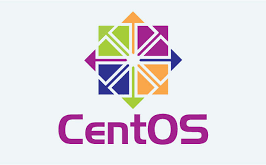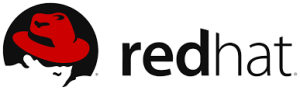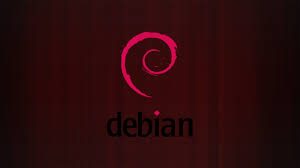Top 10 Linux Distributions in 2024: Complete Comparison Guide

📑 Table of Contents
- Top 10 Linux Distributions in 2024: Complete Comparison Guide
- What Makes a Great Linux Distribution?
- 1. Ubuntu – The Gateway to Linux
- 2. Linux Mint – Ubuntu with a Traditional Twist
- 3. Fedora – Cutting-Edge Technology
- 4. Debian – The Universal Operating System
- 5. Arch Linux – For the DIY Enthusiast
- 6. openSUSE – Enterprise-Grade Linux
- 7. CentOS Stream / Rocky Linux – Enterprise Alternatives
- 8. Manjaro – User-Friendly Arch
- 9. Elementary OS – Beautiful and Simple
- 10. Zorin OS – Windows Alternative
- Choosing the Right Distribution
- Installation and Migration Tips
- Distribution Lifecycle and Support
- Community and Documentation
- Future Trends in Linux Distributions
- Conclusion
Exploring the diverse world of Linux distributions
Top 10 Linux Distributions in 2024: Complete Comparison Guide
Choosing the right Linux distribution can be overwhelming with hundreds of options available. This comprehensive guide compares the top 10 Linux distributions in 2024, helping you make an informed decision based on your needs, experience level, and use case.
What Makes a Great Linux Distribution?
Before diving into specific distributions, let us understand what makes a Linux distribution exceptional:
- Stability and Reliability: How well the system performs under different conditions
- Hardware Support: Compatibility with various hardware configurations
- Software Repository: Availability and variety of software packages
- Community Support: Active forums, documentation, and user base
- Security: Regular updates and security patches
- Ease of Use: User-friendly interface and installation process
- Performance: Resource usage and system responsiveness
Distribution Categories
Linux distributions are generally categorized into:
1. Ubuntu – The Gateway to Linux
Best For: Beginners, Desktop Users, Developers
Base: Debian
Package Manager: APT (apt)
Desktop Environment: GNOME (default)
Ubuntu remains the most popular Linux distribution for good reason. Developed by Canonical, it offers excellent hardware support, a vast software repository, and strong community backing.
Pros:
- Excellent hardware compatibility out of the box
- Large software repository and snap packages
- Strong community support and documentation
- Regular LTS releases with 5-year support
- Great for both beginners and professionals
Cons:
- Can be resource-heavy compared to lighter distributions
- Some controversies around snap packages
- Less customizable than some alternatives
2. Linux Mint – Ubuntu with a Traditional Twist
Best For: Windows Migrants, Conservative Users
Base: Ubuntu/Debian
Package Manager: APT (apt)
Desktop Environment: Cinnamon, MATE, Xfce
Linux Mint provides a more traditional desktop experience while maintaining Ubuntu’s compatibility and ease of use. It is perfect for users transitioning from Windows.
Key Features:
- Familiar Windows-like interface
- Excellent multimedia support out of the box
- More conservative approach to updates
- No snap packages by default
- TimeShift backup tool included

Modern Linux desktop environments offer intuitive user interfaces
3. Fedora – Cutting-Edge Technology
Best For: Developers, Tech Enthusiasts
Base: Independent (Red Hat sponsored)
Package Manager: DNF (dnf)
Desktop Environment: GNOME (default)
Fedora serves as the testing ground for Red Hat Enterprise Linux, offering the latest in open-source technology while maintaining stability.
Advantages:
- Latest software packages and kernel versions
- Strong security features including SELinux
- Excellent development tools and environments
- Fast and reliable package management with DNF
- Strong commitment to open-source principles
4. Debian – The Universal Operating System
Best For: Servers, Stability-focused Users
Base: Independent
Package Manager: APT (apt)
Desktop Environment: Multiple options
Debian is known for its rock-solid stability and serves as the foundation for many other distributions, including Ubuntu.
Strengths:
- Legendary stability and reliability
- Vast software repository
- Strong commitment to free software
- Excellent for servers and production environments
- Multiple architecture support
5. Arch Linux – For the DIY Enthusiast
Best For: Advanced Users, Customization Lovers
Base: Independent
Package Manager: Pacman
Desktop Environment: None (user choice)
Arch Linux follows a rolling-release model and the KISS (Keep It Simple, Stupid) principle, offering a minimalist base that users can customize to their exact needs.
Philosophy and Features:
- Rolling release with cutting-edge software
- Minimalist installation (build your own system)
- Excellent documentation (Arch Wiki)
- AUR (Arch User Repository) for community packages
- High level of customization and control
6. openSUSE – Enterprise-Grade Linux
Best For: System Administrators, Enterprise Users
Base: Independent
Package Manager: Zypper
Desktop Environment: KDE Plasma (default)
openSUSE offers both Leap (stable) and Tumbleweed (rolling) versions, providing enterprise-quality tools and administration features.
Notable Features:
- YaST configuration tool for system administration
- Btrfs file system with snapshots
- Choice between stable (Leap) and rolling (Tumbleweed)
- Strong enterprise and server features
- Excellent KDE Plasma integration
7. CentOS Stream / Rocky Linux – Enterprise Alternatives
Best For: Servers, Enterprise Environments
Base: Red Hat Enterprise Linux
Package Manager: DNF/YUM
Desktop Environment: GNOME (if desktop version)
After CentOS’s transition to CentOS Stream, Rocky Linux emerged as a community-driven replacement, maintaining 1:1 compatibility with RHEL.
Use Cases:
- Production servers and data centers
- Enterprise applications requiring RHEL compatibility
- Long-term support and stability
- Professional training and certification
8. Manjaro – User-Friendly Arch
Best For: Intermediate Users, Gaming
Base: Arch Linux
Package Manager: Pacman + Pamac GUI
Desktop Environment: Xfce, KDE, GNOME
Manjaro makes Arch Linux accessible to more users by providing a user-friendly installer and pre-configured desktop environments.
Benefits:
- Access to Arch repositories and AUR
- Rolling release with delayed testing
- Hardware detection and driver installation
- Gaming-friendly out of the box
- Multiple desktop environment options
9. Elementary OS – Beautiful and Simple
Best For: Design-conscious Users, macOS Migrants
Base: Ubuntu
Package Manager: APT (apt)
Desktop Environment: Pantheon
Elementary OS focuses on providing a beautiful, consistent, and easy-to-use desktop experience reminiscent of macOS.
Design Philosophy:
- Cohesive and beautiful design language
- Custom Pantheon desktop environment
- Curated application ecosystem
- Pay-what-you-want pricing model
- Focus on privacy and user experience
10. Zorin OS – Windows Alternative
Best For: Windows Users, Beginners
Base: Ubuntu
Package Manager: APT (apt)
Desktop Environment: Modified GNOME
Zorin OS is specifically designed to ease the transition from Windows to Linux, offering familiar interfaces and excellent compatibility.
Transition Features:
- Windows-like interface options
- Wine and Play-on-Linux pre-installed
- Excellent hardware support
- Software compatibility layer
- Business and education focused versions
Choosing the Right Distribution
For Beginners
- Ubuntu: Most popular, best support
- Linux Mint: Familiar Windows-like interface
- Zorin OS: Designed for Windows migrants
For Developers
- Fedora: Latest development tools
- Ubuntu: Wide software support
- Arch Linux: Bleeding-edge packages
For Servers
- Debian: Rock-solid stability
- Rocky Linux: RHEL compatibility
- Ubuntu Server: Cloud-friendly
For Gaming
- Manjaro: Latest drivers and software
- Ubuntu: Steam and Proton support
- Pop!_OS: Gaming optimizations
Installation and Migration Tips
Before You Switch:
- Try Before Installing: Use live USBs to test distributions
- Backup Your Data: Always backup important files
- Check Hardware Compatibility: Ensure your hardware is supported
- Plan Your Partition Scheme: Decide on disk partitioning
- Research Software Alternatives: Find Linux equivalents for your applications
Dual Boot Considerations:
- Install Windows first, then Linux
- Use separate drives if possible
- Disable Fast Startup in Windows
- Keep Windows bootloader intact
- Regular backups of both systems
Distribution Lifecycle and Support
Release Models:
- Fixed Release: Ubuntu, Fedora (regular scheduled releases)
- Rolling Release: Arch, openSUSE Tumbleweed (continuous updates)
- LTS (Long Term Support): Ubuntu LTS, Debian Stable (extended support)
- Semi-Rolling: Manjaro (delayed Arch updates for stability)
Community and Documentation
Strong community support is crucial for a positive Linux experience:
- Ubuntu: Largest community, extensive documentation
- Arch: Excellent wiki, knowledgeable community
- Fedora: Professional community, good documentation
- Debian: Mature community, comprehensive manual
Future Trends in Linux Distributions
The Linux distribution landscape continues to evolve:
- Immutable Systems: Fedora Silverblue, NixOS
- Container-based Distributions: Flatpak, Snap, AppImage adoption
- Cloud-native Distributions: Optimized for containerized workloads
- IoT and Edge Computing: Specialized lightweight distributions
- Security-focused Distros: Enhanced security features by default
Making Your Choice
Remember, there is no “best” Linux distribution – only the best one for YOUR needs. Consider your technical skill level, intended use case, hardware requirements, and personal preferences. Most importantly, do not be afraid to try multiple distributions until you find the one that feels right for you.
Conclusion
The diversity of Linux distributions is both a strength and a challenge. Each distribution has its own philosophy, target audience, and strengths. Whether you choose Ubuntu for its ease of use, Arch for its customization potential, or Debian for its stability, you are joining a community of users who value freedom, security, and innovation.
Take time to explore different distributions, engage with their communities, and do not hesitate to switch if your needs change. The beauty of Linux lies in this freedom of choice and the ability to find exactly what works best for you.
Happy distribution hunting, and welcome to the wonderful world of Linux!
Was this article helpful?
About Ramesh Sundararamaiah
Red Hat Certified Architect
Expert in Linux system administration, DevOps automation, and cloud infrastructure. Specializing in Red Hat Enterprise Linux, CentOS, Ubuntu, Docker, Ansible, and enterprise IT solutions.

